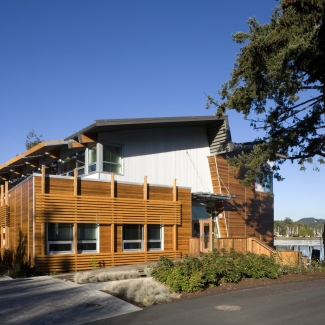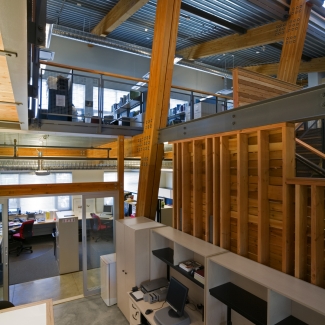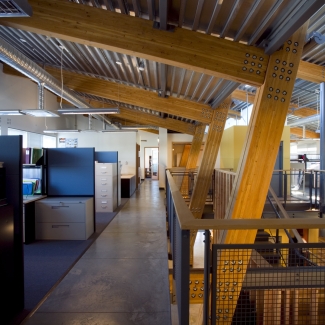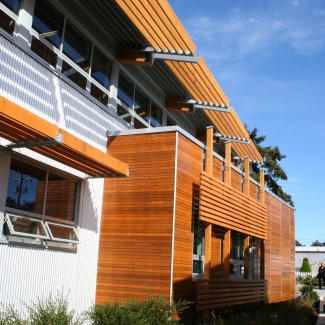Larry McFarland Architects Ltd.
Ron Kato, MRAIC
The Operations Centre built for Parks Canada demonstrates how the natural resources found on a site can be fully integrated within a building to minimize its environmental footprint, and create a building that is highly evocative of the place in which it is built. Located on the waterfront in Sidney, BC, this three-storey building serves as the headquarters for The Gulf Islands National Park Reserve, established in 2003, and includes facilities for marina operations, administrative staff, and an interpretive centre. In recognition of this project’s exceptional indoor environmental quality, and outstanding achievements in land, water, energy, and material conservation, this facility was awarded a LEED® Platinum rating. It is the first project in Canada to achieve this level of sustainability.









Extensive use of B.C. wood, throughout both the interior and exterior as structural elements and finishes, is in striking contrast to the raw metal used for the exterior building envelope and underside structural roof deck, resulting in a dynamic and exuberant expression.
Neil Munro, FRAIC
As RAIC's inaugural "Award of Excellence for Green Building", this project clearly exemplifies that environmental stewardship can convey both modesty and beauty, simultaneously. The Operations Centre's protection and rehabilitation of marine and terrestrial zones speaks to the client's and designer's true appreciation of the values anchoring the core principles of sustainability. Each project must uncover its dormant inherent environmental opportunities, and this design wonderfully celebrates the sustainable notion of resilience. While the roof form is a lyrical expression of marine imagery, it equally speaks to sun, air and natural, local materials. This building thrives on its passive characteristics (witnessed in the building's sectional composition and resolution) and while it benefits from active green technologies (solar panels and ocean energy geo-exchange), neither of these components diminish its overall site response.
If all buildings and neighborhoods could walk this tightrope between low and high tech, socio-economic constraints and contextual sensitivity, then the 2010 imperative and 2030 net-zero challenge will in fact become more than simply an ecological response to climate change as we move towards a holistic model of the sustainable communities we one day hope to live in.
Danny Pearl